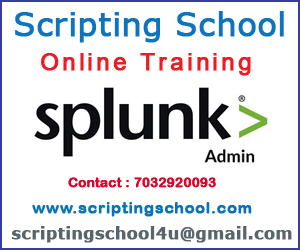Module 1:
Overview of Splunk - Splunk package and components - Installation procedure in various OS - Splunk Architecture Basic Overview - Splunk Port Management
Module 2:
Set up forwarding and receiving - Types of forwarders - Forwarder Deployment Topologies - Universal forwarder - Overview and limitations - Forwarding configuration - Heavy forwarder (Deployment and Capabilities)- Routing and filtering data - Third-party routing from Splunk - Functionalities of Universal and Heavy Forwarder
Module 3:
Deployment Server and Forwarder Management - Configure the Deployment Server-Client Architecture - License Management - Users,roles and authentication - Splunk configuration files overview - Data feeds - Data parsing and indexing - Analyzing the Data
Module 4:
Overview of Indexers and Indexes - Indexer Capabilities - Working model of Indexers - Installation and Configuration of Standalone Indexer - Managing index and index storage - Understanding Index Buckets and Data Ageing - Retention and archiving policy - Basic Cluster Architecture - Clustering Terms - Types of Clustering - Single-site Cluster Deployment - Multi-site Cluster Deployment - Role of Master and peers - Managing the cluster
Module 5:
Overview of Splunk Search head and configuration - Distributed Search - Deployment of Distributed Search - Knowledge Bundles - Search head pooling - Overview of Search head clustering - Understanding Clustering Terms - Configuration of Clustering - Integrate Indexers and Search-heads - Mounted Bundles - Understanding Clustered Architecture - Search Artifacts
Module 6:
Basic Overview of Splunk Search - SPL Language - Create Simple Dashboards - Setting up Alerts and Reports - Common Search Commands - Troubleshooting Steps

